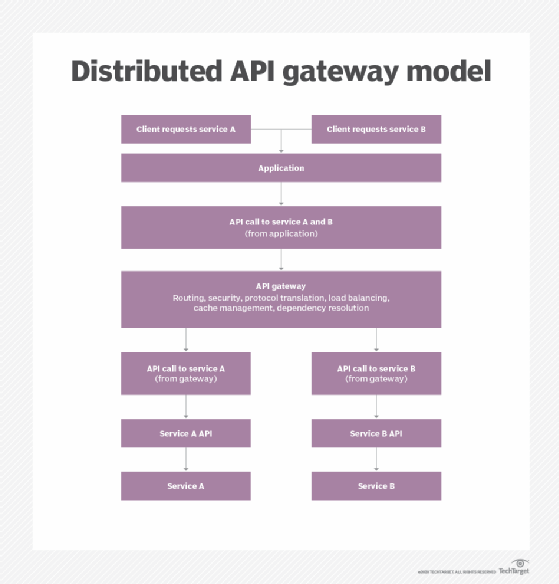4 must-have API management components
APIs don't manage themselves. Get to know these key API management components to ensure your applications perform as intended.
It's no secret that organizations must treat their APIs like the lifeblood of their business. Part of this involves creating a comprehensive, foolproof API management strategy.
Enterprises need a tool that tracks all requests and responses, monitors performance, provides for quick remediation of errors and ensures that any consuming developers can easily put your API to work.
In this feature, we'll discuss the four must-have API management components, and explore the practices and tools required to address each one.
1. API testing environment
A proper testing environment is an essential component of any API management strategy. Ideally, this should exist as a localized version of the API's production environment.
There are three main types of API tests to prioritize:
- Functional testing validates all API features and functions operate as intended. Functional testing should also target the security and the error handling mechanisms that protect the API.
- Performance testing evaluates how well an API handles necessary workloads, particular in times of heavy use. Simulate erratic traffic and unpredictable load conditions to investigate performance weak spots.
- Acceptance testing gauges whether an API adequately serves its intended purpose. These tests can reveal whether changes to the API affect its intended use and identify possible changes that could make the API more useful.
2. API gateway
An API gateway sits at the center of API communication. Similar to an enterprise service bus, the gateway acts as a messaging administrator that intercepts an API call, transfers it to the appropriate API and then handles the response. Instead of managing a complex web of API integrations one-by-one, this API management component provides an abstracted, but centralized, contact point for calls and responses.

In cases where APIs integrate with external systems that speak a different language, the API gateway acts as a translator. For instance, gateways are typically capable of converting web-based protocol formats into those that SOAP-based APIs can understand, such as XML. Many gateway products also include automated monitoring and tracing tools that track the movement of APIs through it and record all call/response transactions.
3. API documentation
Good documentation is an integral component of API management and is arguably just as important as the underlying code. A lack of proper documentation will slow the development process and damage your API's functionality, as well as impede adoption and amendment efforts. Without good documentation, adopting or amending the API is a frustrating and time-heavy process. Additionally, documentation ensures code stays intact and keeps track of changes between developers.
There are three broad categories of API documentation:
- Reference documentation covers the granular details of an API, including a complete syntax of every call and request it supports.
- Example documentation illustrates the APIs use cases. For instance, if a particular API can read metric and imperial formats of measurement data, the example documentation should include lines of code that show how the API handles the different formats.
- Tutorial documentation provides context for the API. Typically, this consists of guides and tutorials on the API's usage.
4. API developer portal
The developer portal acts as a storefront between APIs and developers. A proper developer portal should provide human readable guides that describe what the API does, tutorials with step-by-step use instructions and SDKs that help developers integrate with the APIs.
The portal must include an API catalog mechanism that is easy to access and navigate. This should include samples of potential API responses that help developers understand behavior and what they can build with them. A portal should also provide the information contained in your API documentation, including references for HTTP routes, requests and responses. Finally, provide change logs that record updates and errors, as well as a real-time tracker that displays the current status of a particular API.








